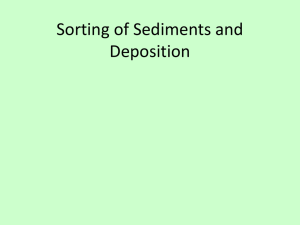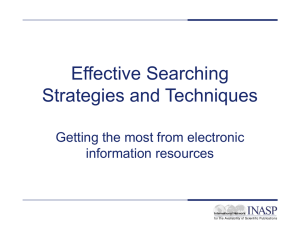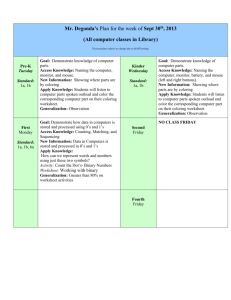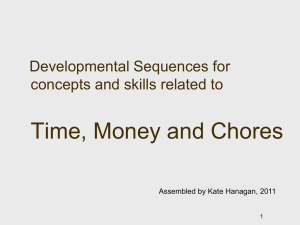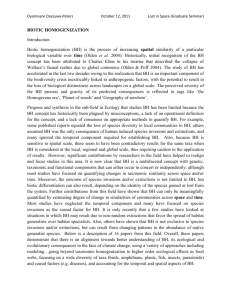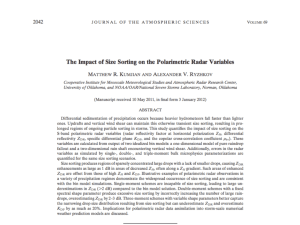Distribution
advertisement
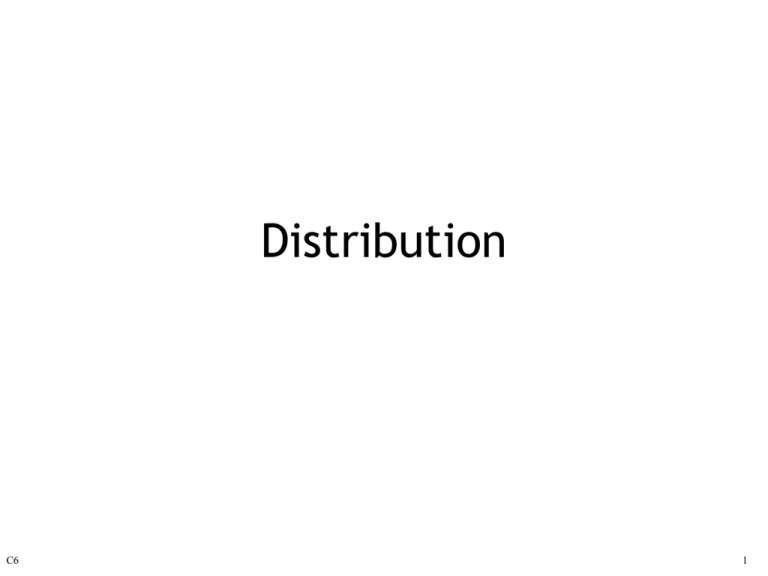
Distribution C6 1 Distribution channel • A distribution channel is the set of of independent entities involved in the process of rendering a product or service available for use or consumption C6 2 Marketing channel decisions • Are among the most critical decisions facing management • Intimately affect all other marketing, and overall strategic decisions • Involve relatively long-term commitments • Create a key external resource • Powerful inertial tendencies C6 3 Why distribution channels? • Matching supply and demand – The right quantities at the right time in the right place – Location, location, location! C6 4 Three basic functions • Adjusting the discrepancy of assortments • Routinization of transactions • Facilitate searching C6 5 Adjusting the discrepancy of assortments • Producers make large quantities • Customers want small quantities • Sorting – Arranging products or services according to class, kind, or size • Sorting out – Grading products or output • Accumulation – Aggregation of stocks from different suppliers • Allocation – Distribution according to a plan (e.g., breaking bulk) • Assorting – Putting together an appropriate package C6 6 Routinization of transactions • Reducing the cost of distribution • Standard transactions minimize cost of bargaining • Automation of reordering, payment C6 7 Facilitate searching • Aid producers and customers by structuring the information essential to both parties • Intermediaries provide a place for buyers and sellers to find each other and exchange information • Searching occurs because of uncertainty – Intermediaries reduce uncertainty for both parties C6 8 What does technology do? • Kills distance – The distance between buyer and seller disappears • Homogenizes time – The Web site is open all hours and seasons • Location is irrelevant, irrelevant, irrelevant! – Move from marketplace to marketspace C6 9 Internet distribution matrix Reassortment and sorting Routinization Searching The death of distance The homogenization of time The irrelevance of location C6 10 The death of distance and reassortment/sorting • Customers can’t always get exactly the mix they want • Music Maker – Create your own CDs – Postal delivery now – In the future: • Via the Web • Press your own CD (or just store it on disk) C6 11 C6 12 Death of distance and reassortment/sorting • Pros – Lowers costs – Free global distribution – One-to-one marketing C6 • Cons – Rampant piracy? – Record stores are bypassed – Cyberpayments? 13 Death of distance and routinization • The difficulty of routinely updating large industrial catalogs – frequency – complexity – large numbers of customers • RS Components – – – – C6 Customized search pages 100,000 components ± 6,000 new components per month Expect $65 ($59) million in 2 years • GE Plastics • DuPont Lubricants 14 C6 15 Death of distance and searching • Lufthansa’s global reservation system lets travelers book from anywhere to anywhere wherever you might be • Pick up the tickets at the airport • Access the timetables, fares, and routes of competitors • Lufthansa can directly interact with customers all over the world. C6 16 Homogenization of time and reassortment/sorting • Education is time and place bound • Duke’s GEMBA allows its students to take elective courses anywhere, anytime over the Internet • Students can self-assort the MBA program they want C6 17 Homogenization of time and routinization • BA executive club info – Millions by mail – Every month – Out-of-date on arrival • Now – On-line – Up-to-the minute C6 18 C6 19 Homogenization of time and searching • Buyers and sellers often operate in different time spheres • The Recruitment Business – Monster Board – 50 000 jobs from more than 4 000 companies – Customized email updates for jobseekers • Who got it wrong? – Times Higher Education Supplement • Who got it right? C6 – jobs.ac.uk 20 C6 21 Irrelevance of location and re-assortment/sorting • Dell Computers • Web sales > $6 (%5.5) million/day • Dell stock turn – 30 times/year • Compaq stock turn – 12 times/year – CEO fired in Spring 1999 C6 22 C6 23 Irrelevance of location and routinization • Major business-to-business purchasing off web sites – Caterpillar • Attains an average saving of 6 percent through its Web supplier bidding system – General Electric • Bidding process has been cut from 21 to 10 days • Cost of goods has declined between 5 and 20 percent – Priceline C6 24 C6 25 Irrelevance of location and searching • No discussion of marketing on the Internet is complete, regardless of how many times you’ve heard about it, talked about it … C6 26 From channels to media • In the past, the channel was just that – a conduit • Now, it is for far more than just moving products – A distribution medium rather than a channel C6 27 Commoditization • The complex and the difficult becomes simple and easy • So simple that anyone can do them, and does • A natural outcome of competition and technological advance • Prices plunge and essential differences vanish • The new economy puts Commoditization into overdrive – Speeds information flows • Only antidotes – A niche market too small to be attractive to others – Innovation sufficiently rapid to stay ahead of the pack – Or … a monopoly C6 28 Disintermediation • As networks connect everybody to everybody, more opportunities for shortcuts • When you can connect straight from the computer on your desk to the computer of your broker, stockbrokers look like overpriced terminal devices • Supported by cheap, convenient and increasingly universal distribution networks (e.g., FedEx and UPS) • As networks turn increasingly mass market, there is a continuous game of disintermediation and reintermediation • To the winners go the customer relationships C6 29 Mass model of distribution and communication Centralized control Substantial investment C6 30 Network model of distribution and communication C6 31 Conclusion • The Web offers opportunities to perform the existing distribution functions of reassortment/sorting, routinization, and searching more efficiently and effectively • Distribution will transform C6 32




